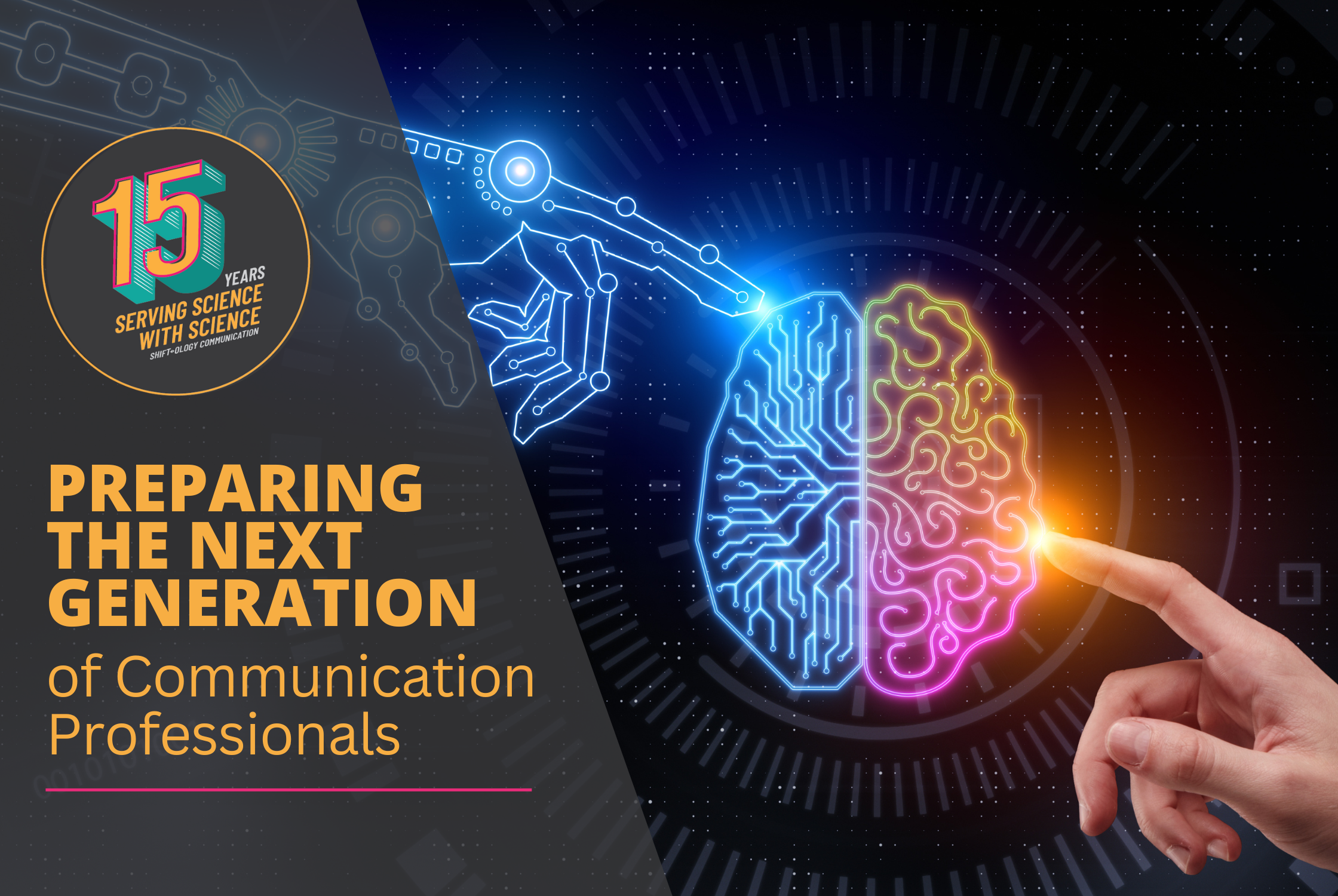Preparing the Next Generation of Communication Professionals
By Dan Toland
Rapid changes in communication technology have drastically changed the way we all work, especially those of us who work in communication. In a world where the next big things emerge faster than courses can be prepared to teach them, how are colleges working to equip the next generation of communication professionals?
Shift•ology CEO Melanie Wilt connected with Mary Sterenberg, a professor at The Ohio State University’s School of Communication, in a recent episode of the Shooting the Shift podcast to learn how academia keeps pace with trends reshaping the industry, and what has to be done to ensure students have the proper hard skills and soft skills needed to succeed in this ever-changing field.
Below are a few excerpts from the interview. Watch or listen to the entire episode here.
Melanie Wilt: How do you keep up with all the changes in communication over the past decade at the university?
Mary Sterenberg: The reality is we can’t always keep pace the same way the industry does. If there’s something happening in social media or generative AI, we can’t have a course on the books by fall. But we can make sure our instructors are keeping pace with industry. We’re talking to professionals, we’re taking education, we’re going to conferences or getting into employers and then bringing the information back to students. So we can incorporate the new things we’re learning and what we’re hearing.
MW: How do you address changes in the work environment students need to understand as they enter the workforce?
MS: Success in a job is not just the nuts and bolts of an industry anymore. Students are being prepared for remote and hybrid work environments. Can they work and function with others in a variety of environments? I bring in professionals as guest speakers so they can hear it from the folks that are going to be hiring them, and I encourage students to get mentors. We also take students on agency tours and networking trips to hear these things directly.
MW: What changes do you anticipate in digital and social media in PR over the next several years?
MS: New tools and platforms will continue to come and go, but the critical thinking and the strategy behind it are going to carry through. As we get shorter content, each word matters more, but it still fits into the bigger picture of strategy, and the consumer insights driving things. The strategy, research and analytics gets more important, as does responding because we don’t have as many words. It also makes it more challenging to be creative.
MW: What are students learning today from alumni through internships, volunteer opportunities, etc.?
MS: Students need to seek out ways to learn from others. Ask to sit in meetings, go to networking events, join professional organizations. We encourage them to be sponges and to be learners. I have an alum that always tells students that they appreciate them wanting to talk about leadership skills, but you don’t start in the industry as a leader. They need to come in and be willing to learn and listen. Professionals need to know they want to be a quick learner more than hearing they will be a great leader right out of the gate. The students that are really getting ahead are those who care about their writing skills. Employers gravitate toward those students. Those skills also ladder up to just general attention to detail and professionalism that is very highly sought after in the workforce.
MW: How do we find more ways to measure or look at engagement?
MS: The demand for authenticity, transparency and having two-way communication is growing. The upcoming generation intrinsically gets that because it’s their expectation too. Being willing to accept feedback, good and bad, and thinking about how you respond is going to be more the norm. You’re now getting data on how something’s performing and trying to pivot in real time. That’s where things are going…that real time pivot. We talk a lot to students about getting as much analytics experience as they can and tying it to business objectives. A creative idea is not just enough, but a creative idea you can show contributed to what a client or organization wants is really, really valuable.
MW: How is generative Artificial Intelligence (AI) going to impact the industry and future workforce?
MS: With generative AI, we’re probably at the cusp of some of the biggest changes we’ve seen. Obviously students need to be doing their own work in the classroom. I ask them to not have AI do things for skills they need in the workforce, but I tell them these tools are going to be very, very important and they better be using and playing with them. We talk about the ethics involved, and not using it as a substitute for your own strategic thinking. Good luck coming up with a prompt that’s going to spit out exactly what your brain is able to spit out. We are far, far from that, if it ever happens.
Communications Professor Mary Sterenberg shares trends and observations shaping the future workforce.Learn more about Mary Sterenberg

